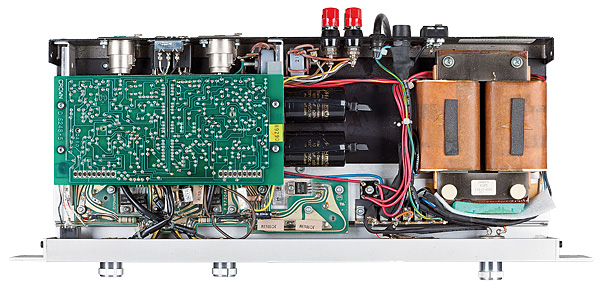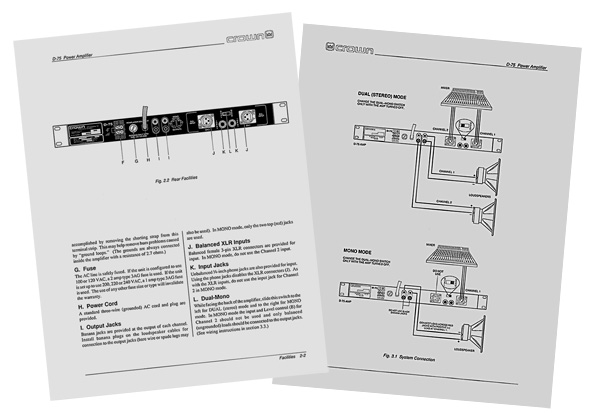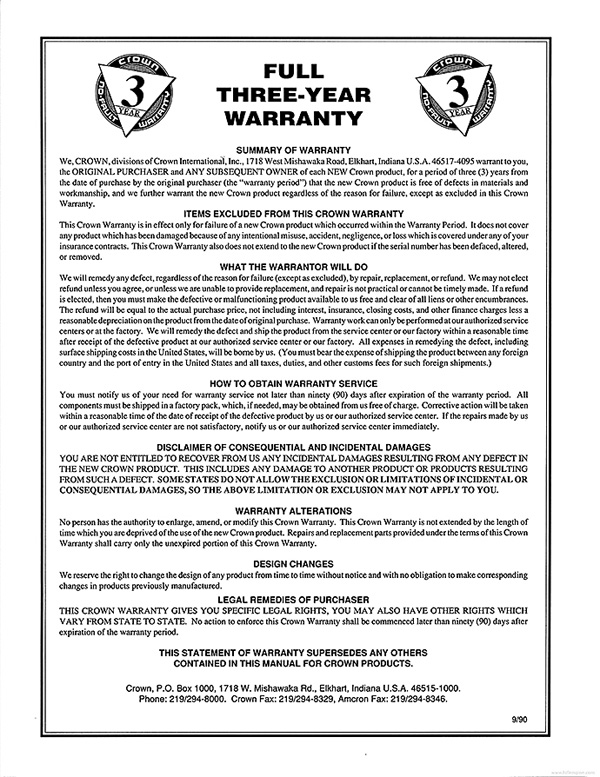Amcron D-75 amplifier Page 2
While the Amcron D-75 provided a vivid lesson in how headphones and headphone amplifiers have improved over the decades, the sound was detailed enough to hear how the D-75 would serve studio users with greater efficacy than units more at home for a soothing evening’s listening, brandy in hand.
Caught In A Snap
As the headphone socket doesn’t mute the speakers, one needs to disconnect the latter to hear just the headphones, because even the most tightly-coupled over-ear cans will not isolate the listener completely from speakers playing in the room.

Power was ample, bass dry and tight, treble snappy. The Beyers felt like they’d returned home after decades in exile, used with modern, dedicated headphone amps. And while contemporary listeners will prefer the more polished sound of current headphone amps from Quad, OPPO, Musical Fidelity and others for serious listening with the likes of Audeze, B&W, KEF, Focal and other latter-day cans, there is no doubt that this serves as one helluva robust headphone amp. It’s worth acquiring, provided you find one for under £100, as that’s the point where companies like Schiit, with its US-made headphone amps, deliver the goods.
Listening in this mode to pre-recorded tapes – I’m not overly taken by built-in headphone outputs on most decks, though the Technics RS-1500’s headphone section is certainly listenable – the only real objection was tape hiss between tracks. All of the pre-recorded tapes I own are pre- or non-Dolby, and hiss never intrudes during the musical passages, but the excess treble energy will offend an audiophile more than it would a producer or engineer accustomed to the sound of unfiltered master tapes.
With The Turtles’ ‘She’d Rather Be With Me’ from The Turtles’ Golden Hits [White Whale WWC7115; 7½ips tape], Johnny Barbata’s militaristic drumming enjoyed impact and snap, the bass was melodic and devoid of too much ‘thump’ or lumpiness. Best of all was the way the unit handled the midband activity, especially the group’s legendary harmonies. And you’ll forgive this unit for any raucousness when the cowbells kick in at around 1m10s. I compared it with the CD – natch, the tape massacred it – but even the added aggression of CD versus reel-to-reel tape didn’t drive the Amcron D-75 into the fatigue zone.

Interestingly, a cowbell opens The Chamber Brothers’ immortal ‘Time Has Come Today’ from The Time Has Come [Columbia CQ1020; 7½ips tape]. Its attack was visceral, the ringing overtones intact. Stereo spread was vast, outside of the head even via the Beyers, which aren’t known for allowing such spatial freedom. Switching to loudspeakers changed everything, though, and for the better.
Soaring 'N' Sweet
This is a gutsy, tough little amp, scrappy like a street fighter. While its bigger brothers were known more for their brutal behaviour and ‘unburstability’ at the hands of studio headbangers, they also found favour with audiophiles who owned ornery speakers, in the days before Apogees dropped impedances to savagely tough levels. I recall hearing big Crown amps with Ohms, with their Walsh drivers, Gales, ESS Heil-equipped models and other oddities from the 1960s and 1970s, when as a novice, I would haunt hi-fi shops. The D-75’s siblings would be hard to match.
Editor Paul Miller reveals the D-75s technical performance here, but the company rated its stereo output as 40W/8ohm and 55W/4ohm and, as a bridged monoblock, at 110W/8ohm or 60W/16ohm. That mono switch on the back makes me kick myself for not buying a second one at the Tonbridge Audiojumble... Anyway, ignore the rating because the amp acts as if it’s a 100-watter-plus.

Back to tape, I fed the Technics RS-1500 with a particularly gorgeous audiophile benchmark: The Very Best Of Roy Orbison [Monument MNC8045; 7½ips tape]. Those of you who have listened to this most elegiac of vocalists, especially via the stunning audiophile vinyl reissues that pop up with welcomed regularity, will know why these are show faves. The potential for sonic calamity was immense but the D-75 delivered the goods with something approaching panache.
‘Only The Lonely’, recorded in severe left-right exaggeration, managed to sound of a whole, the effect far less extreme than via cans. The test, around 40 seconds in, was the arrival of the strings, which I expected to screech. Nuh-uh: they were soaring and sweet, while the redneck bass in the opposite channel enjoyed that wicked snap that makes you want to forgive the excesses of C&W clichés.
As for the bass introduction to ‘Dream Baby’ – whew! I was anticipating the kind of dryness that undermines both bad solid-state and bad digital. Here it was rich and flowing, again, sans too much thumpiness. And the ‘Sha-da-da-das’ for the female chorus sounded positively angelic. As for the Big O’s voice – crystal clarity and better than expected transparency. This amplifier may be one of the best vintage bargains of them all...

Buying Secondhand
After sorting out a decent D-75 for myself last year for a princely £70, I see that the precious few on offer on auction websites can now go as high as £500. How so? In February, at the AudioJumble, you could have acquired the entire trio of D-75, D-150A and DC-300A in working order for the same money. Just as I found that £500 example (from Japan) online, eBay USA popped up with one on a ‘Buy It Now’ tariff of only $149 (£105).
Prices, then, are all over the place, but one thing is constant: most are ex-studio and therefore well-used. Make sure the one you’re considering is in, at least, working order, though most units will need only their capacitors replaced. What you get for your money is a tough little brute that also makes for a killer headphone amp... if you favour studio cans of the 1970s.
Hi-Fi News Verdict
Fears of the D-75 sounding as edgy as period transistor amps from the 1960s and 1970s usually do were swiftly allayed, but the balance is toward the sharp. The amplifier sounded more powerful than its rating suggests, and I was staggered at its performance through the Wilson Yvettes and BBC LS3/5As. ‘Refined’ is not a description that readily springs to mind, but wow, ‘well-mannered rocker!’ certainly does.


















































